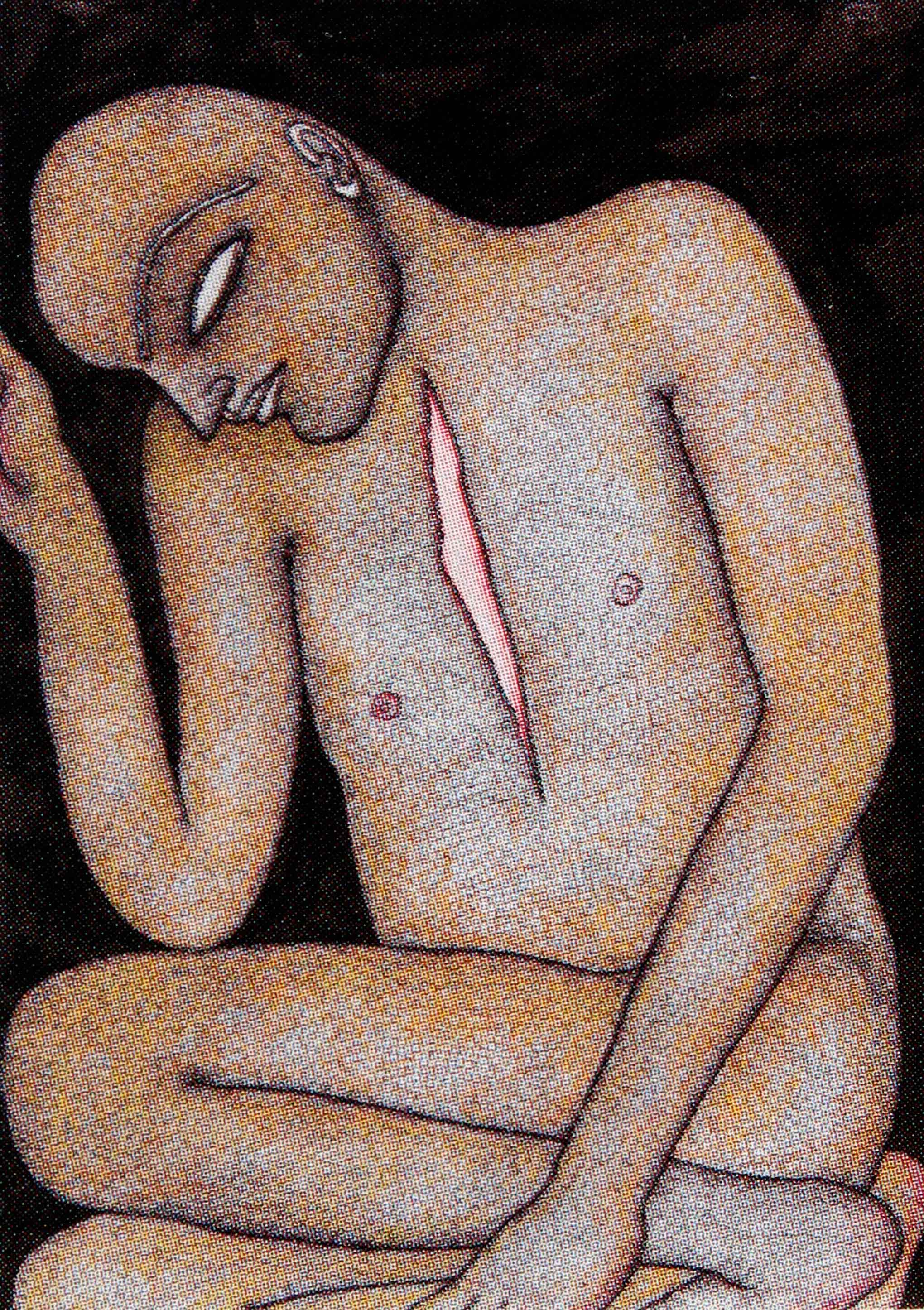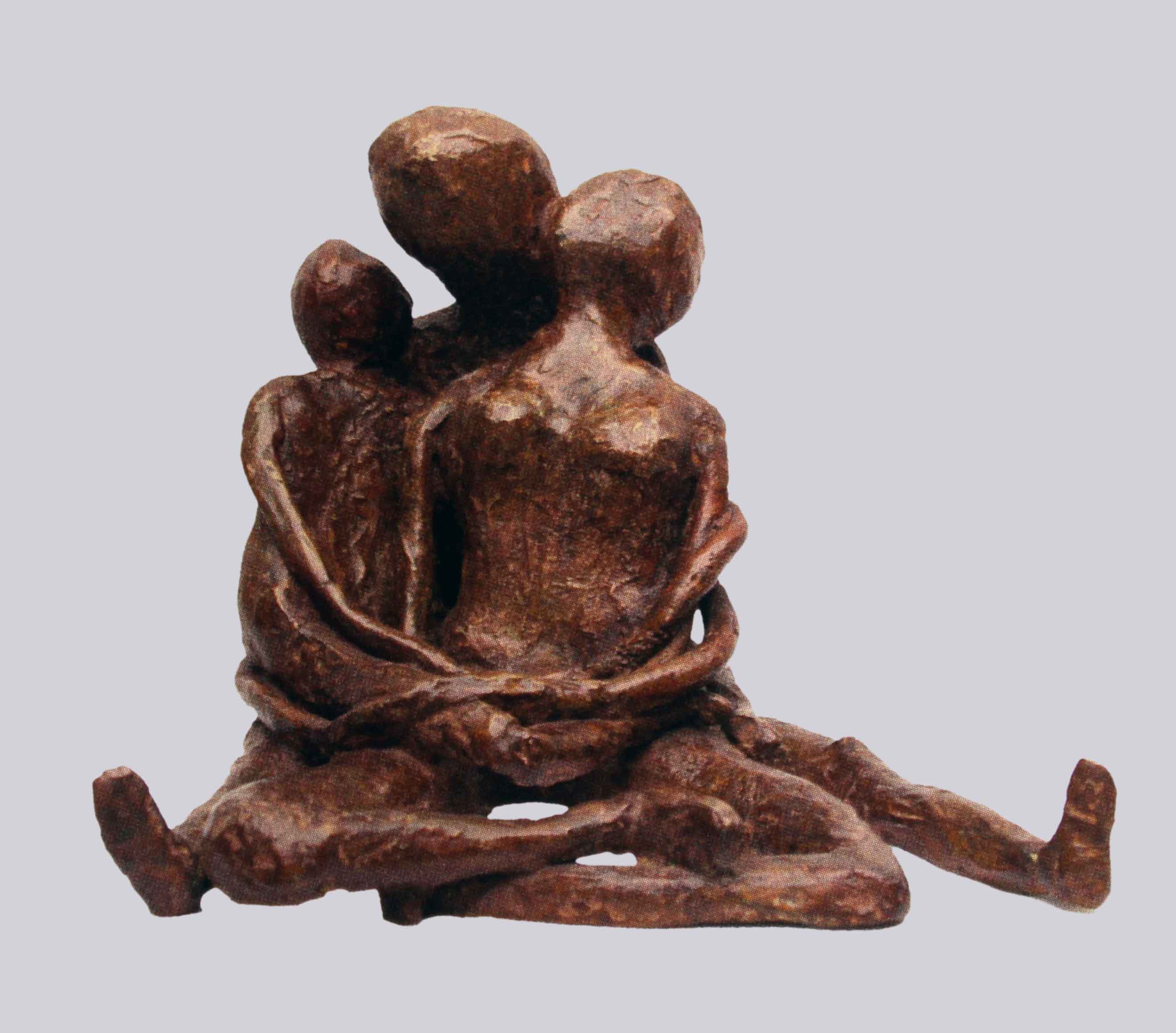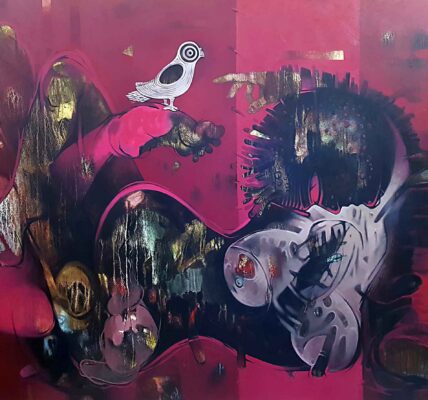When I wrote my last review of art in Delhi, I did not expect art exhibitions to take a leap forward so soon. But they have. To begin with, there is the exhibition of CIMA at the India Habitat Centre under the title of ‘Colours of Freedom, the Art of Independent India’. It struck me how the word for freedom, Azadi, has changed its meaning through its detractors. But this exhibition has brought us close to its quality of reaching out beyond any shade of prejudice. It has achieved its purpose, but not without showing the work of over 50 artists across generations since 1947 to strengthen their position.
Right at the beginning of the exhibition, we see a work by Bhupen Khakhar, The River (1993), which is a challenge to homophobia in a society dominated by patriarchy. Not far from it, we have a woman’s response to the commercialisation of a female as an object of exchange by Jaya Ganguly (2020). Prejudice gets a knock on its knuckles from the very beginning of your entry.
Then we see the angst and dissatisfaction in human society with our condition today in the works of our leading artists expressing their pain with it as wounds on the human body by Jogen Chowdhury (2006), Somnath Hore (1977), and Bikash Bhattacharya’s ‘Wounded Family’ (1999), and the oppression individuals face in Sanat Kar’s engraving of 2009, with people in a pillar one on top of the other. But it is interesting to see the work of younger artists like A. Balasubramanian’s ‘In but Out’ in copper wire and acrylic (2009) and Kingshuk Sarkar’s work in carbon ink, acrylic animal glue over cotton stretched on canvas, titled ‘He’ (2007). Even a senior artist like Himmat Shah is disturbed by the hypocrisy of present-day society in a book of drawings entitled ‘Under the Mask’ (2020).
Finally, there are works of artists who try to analyse their feelings in the frame of history, distancing themselves from the moment. Both Satyajit Ray’s undated work and a similar one by M.F. Husain of 1987-88 we see a celebration of the film ‘Pather Panchali’. But what really caught my eye was a large diptych of drawings on paper on board by Manish Moitra (2020) highlighting the cooperation in labour, something we tend to forget as consumers. There is a remarkable lack of nostalgia in the works of the young and even historical events, as in Ashish Kumar Mahakhud’s film clips of Gandhi of the period up to the Dandi march is seen as a ‘Virtual Song(2020). It is clear the young no longer trust the growing theatricality any more. They are seeking their own alternatives and perhaps that is the best thing to do, as it brings us a sense of being able to cope with anything we may face.
This is perhaps most evident in a carefully chosen exhibition on the epic of Mahabharata at the Art Magnum gallery near the Indian Oil Building in Green Park. There are only four artists chosen in this exhibition: Aditya Basak, Chandra Bhattacharjee, Jaya Ganguly and Samir Aich, curated by Jyotirmoy Bhattacharya. Their works reflect contemporary readings of the Mahabharata in our times. The burning of the serpents, Krishna awakening to the sight of the Pandavas at his feet while the Kaurvas are behind his head, the disrobing of Draupadi, the game of chance (Chaupar), the death of Bhishma Pitamah, the murder of Dushashan and the meeting of the mothers of both the Kauravas and the Pandavas at the end of the war are visually presented as part of a human tragedy that needs to be avoided at any time and not be repeated. Each of them has expressed these incidents not merely as illustrating an epic but as related to human conditions any of us can face at any time. This gives this exhibition its special character that needs to be looked at and understood. The viewer is also given a chance to look at drawings that evolved into the large canvases that emerged out of them. These drawings are no less important than the finished products. Moreover, the gallery has ensured a price list that caters to every type of collector and is worth a visit.
Another exhibition at the Arushi Art Gallery in Greater Kailash II is exhibiting the work of Bratin Khan. It shows the images of the epic hero, Krishna, that Sri Aurobindo looked for in lives that embody human realities like the practice of harmony, truthfulness, and wisdom. He was looking at the religion of human beings above caste, creed, religion, colour, or territory of different countries, which he expounded on in his famous address in Chicago. Britain has used its palette of warm and cool colours both in nature and human activities like bringing home the cattle and celebrating day-to-day festivals. His exhibition too has brought the relevance of the epic Mahabharat to day-to-day life clothed in scenes of the peasantry and lily ponds we find in every village.
The concern with nature and the need of human beings to understand and protect it is also the subject matter of the sculptures of the young artist KR Nariman at the Visual Art Gallery at India Habitat Centre. She has blended sculptures of humans as in Mother and Child, family units as in Connect, Embrace, and Interconnected, with animals and birds reminding us of human frailty as in the cock dancing as Narcissist and a turtle between a rock and a hard place. But among these are sculptors of turtles climbing rocks, the precarious journey of the Rhino, and the resilience of mountain goats, the fish secure in the sea and the pangolin in the forest. She also shows how trees are laid bare and leafless, and vultures await extinction in the hunger to plunder nature. The sculptor has trained under K.S. Radhakrishnan in bronze sculpture, Anisha Gupta in pottery, Sudarshan Sahoo in stone, and Saroj Jain in sculpture as an art, and then at the University of Arts in London. She reflects global concerns in simple language that is common to all humanity. She awakens us to our being part of the same problems afflicting life the world over and appeals to the sense of human responsibility for what is a global problem, calling for a global outreach and a response based on an understanding of the human condition and its capacity to overcome it. Each of these exhibitions gives us a sense of optimism and strength. This is an important and major trend in art we are likely to see attracting the young today to do the best they can.
Read More>> Please Subscribe our Physical Magazine

